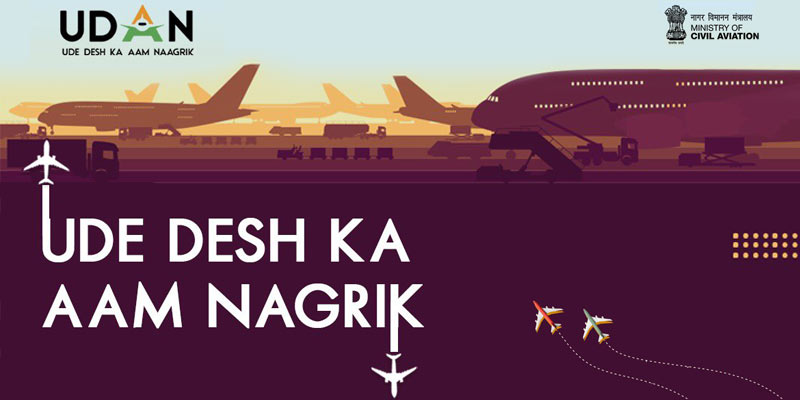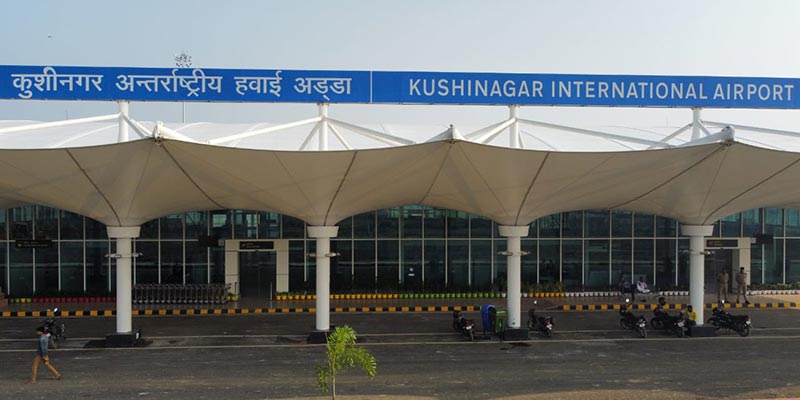- India
- Nov 29
Explainer / UDAN scheme
Domestic flight operations at the newly inaugurated Kushinagar airport in Uttar Pradesh commenced on November 26 with the first flight operating between Delhi and Kushinagar under the Regional Connectivity Scheme - Ude Desh Ka Aam Naagrik (RCS-UDAN).
The Kushinagar airport was inaugurated by Prime Minister Narendra Modi on October 20.
SpiceJet has started operating flights on the Delhi-Kushinagar route four times a week. From next month, flights for Kolkata (December 17) and Mumbai (December 18) will start.
Significance of Kushinagar airport
• Kushinagar is the final resting place of Lord Buddha where he attained Mahaparinirvana and is among the most important pilgrim spots for Buddhists.
• The new airport, built at an estimated cost of Rs 260 crore, is part of the government’s endeavour to connect Buddhist pilgrimage sites around the world.
• The airport will serve nearby districts of Uttar Pradesh and Bihar and is an important step in boosting investment and employment opportunities in the region.
• The airport will help in attracting more followers of Buddhism from home and abroad to Kushinagar and will enhance the development of a Buddhist theme-based circuit.
• It is the centre point of the Buddhist circuit, which consists of pilgrimage sites at Lumbini, Sarnath and Gaya. The journey to sites like Lumbini, Bodhgaya, Sarnath, Kushinagar, Shravasti, Rajgir, Sankisa and Vaishali of the Buddhist circuit will be covered in lesser time.
• Tourism inflow is expected to rise by upto 20 per cent with inauguration of the flight.
What is UDAN scheme?
• UDAN (Ude Desh Ka Aam Naagrik) is a key component of the National Civil Aviation Policy (NCAP), 2016 which was released by the ministry of civil aviation (MoCA) on June 15, 2016.
• Ministry of civil aviation launched RCS-UDAN scheme on October 21, 2016. The first RCS-UDAN flight was inaugurated by Prime Minister Narendra Modi on April 27, 2017 from Shimla to Delhi.
• The primary objective of RCS is to facilitate and stimulate regional air connectivity by making it affordable.
• The regional connectivity scheme will be applicable on route length between 200 to 800 km with no lower limit set for hilly, remote, island and security sensitive regions.
• The scheme is for a period of 10 years.
• The government aims to achieve the target of operationalising as many as 100 unserved and underserved airports and starting at least 1,000 RCS routes by 2024.
• As on November 28, as many as 395 routes have been operationalised under the UDAN scheme, and 63 airports, six heliports and two water aerodromes.
Promoting affordability of Regional air connectivity is envisioned under RCS by supporting airline operators through:
1) Concessions by central government, state governments and airport operators to reduce the cost of airline operations on regional routes.
2) Financial support (viability gap funding or VGF) to meet the gap, if any, between the cost of airline operations and expected revenues on such routes.
RCS-UDAN is a demand-driven scheme, where airline operators undertake assessment of demand on particular routes.
Concessions to reduce airline operations
1) Concessions from the government of India:
• Viability Gap Funding (VGF) to subsidise the airfare.
• Concession on service tax on tickets.
• Code-sharing of UDAN-RCS flights permitted with other operators.
2) Concessions from state governments:
• Reduction of VAT (or GST after GST came in operation) to 1 per cent or less for 10 years.
• Coordinate with oil companies to create fueling infrastructure on airports.
• Provide free land for the development of airport, with multimodal (rail, road, metro, waterways, etc) hinterland connectivity.
• Provide free trained security.
• Provision of water, electricity and other utilities at reduced rate.
• Provide 20 per cent share of Viability Gap Funding. Northeastern states, Uttarakhand, Himachal Pradesh and Union Territories to provide 10 per cent share.
• State governments are encouraged to provide additional concessions.
3) Concessions from airport operators:
• No landing, parking or other charges.
• No Terminal Navigation Landing Charges (TNLC).
• Allow selected airlines to manage the ground handling of flights.
• Route Navigation and Facilitation Charges (RNFC) will be applied on UDAN-RCS flights by AAI on a discounted rate of 42.50 per cent of normal rates.
Manorama Yearbook app is now available on Google Play Store and iOS App Store


